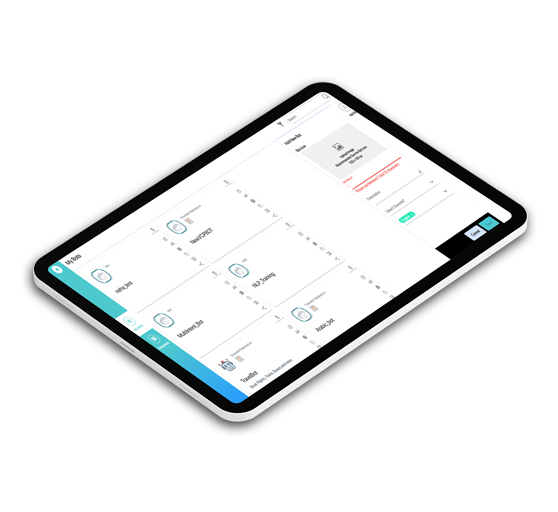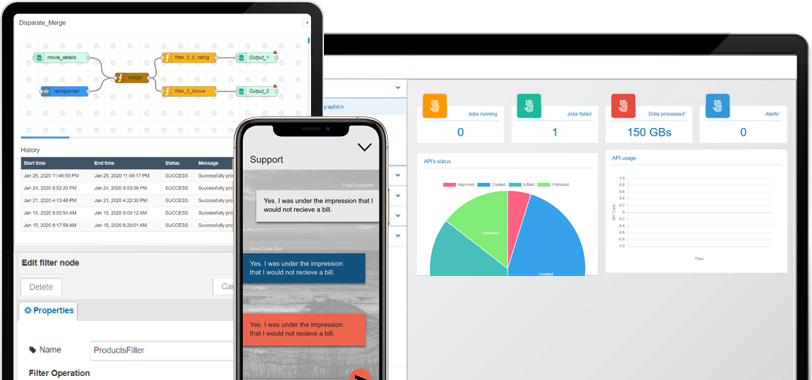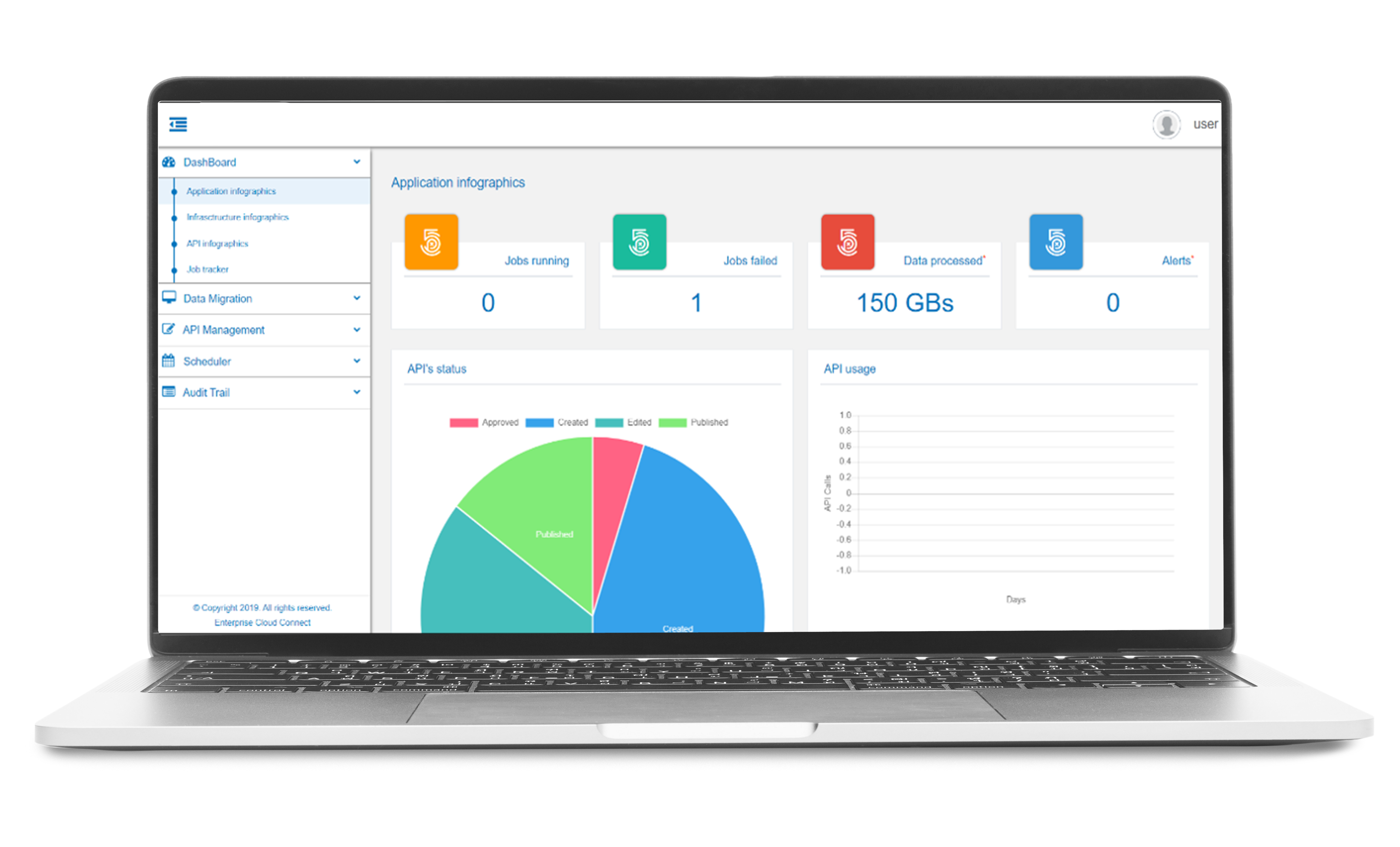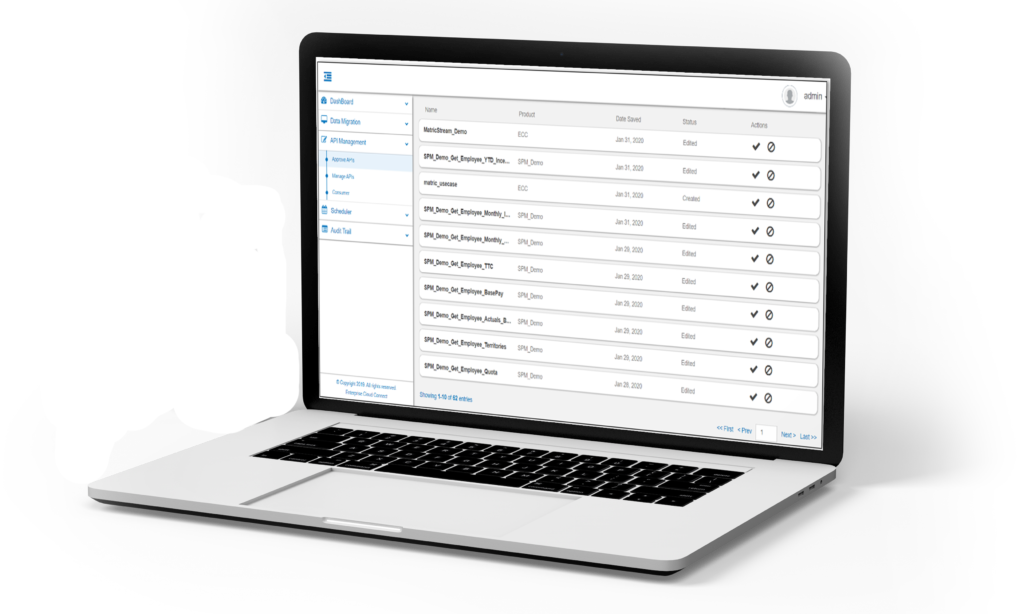AI and Cognitive Services
Engage with your data through contextual and personalized customer experiences

Engage with your data through contextual and personalized customer experiences

Companies of all sizes are awash in data. But data that cannot be easily accessed and engaged is of little value. How, then, are you to help your workforce and customers better engage with the data you’ve refined, connected, and deployed? While there are innumerable ways to provide better, easier access to data, the idea is to allow the user to interact naturally with your systems, to allow them to ask for what they need without any particular knowledge of where that data is or how it is formatted, and let the system determine their intent and respond accordingly.

Artificial intelligence (AI) is a wide-ranging branch of computer science concerned with building systems capable of performing tasks that typically require human intelligence. AI has numerous sub-disciplines, the most notable being machine learning (ML) and natural language processing (NLP), but it also encompasses core technical areas such as speech recognition, image recognition, text to speech, and speech to text. Each of the above is critical to the overarching goal of humanizing the interaction we have with technology and using that technology to augment our ability to engage with systems and data.
Artificial intelligence (AI) is a wide-ranging branch of computer science concerned with building systems capable of performing tasks that typically require human intelligence. AI has numerous sub-disciplines, the most notable being machine learning (ML) and natural language processing (NLP), but it also encompasses core technical areas such as speech recognition, image recognition, text to speech, and speech to text. Each of the above is critical to the overarching goal of humanizing the interaction we have with technology and using that technology to augment our ability to engage with systems and data.


A chatbot is a computer program that simulates and processes human conversation (either written or spoken), allowing humans to interact with digital devices as if they were communicating with a real person.
Chatbots can be as simple as rudimentary programs that answer a simple query with a single-line response, or as sophisticated as digital assistants that learn and evolve to deliver increasing levels of personalization as they gather and process information.
For end-users, chatbots can quickly provide hard-to-find information or act as an assistant for fulfilling certain tasks. For business, chatbots boost operational efficiency and cost savings while offering convenience and added services for customers.
They allow companies to easily resolve many types of customer queries and issues while reducing the need for humans, IntelliTek.ai, our industry-leading Conversational AI platform, is a leading example of a Conversation AI platform.

A chatbot is a computer program that simulates and processes human conversation (either written or spoken), allowing humans to interact with digital devices as if they were communicating with a real person.
Chatbots can be as simple as rudimentary programs that answer a simple query with a single-line response, or as sophisticated as digital assistants that learn and evolve to deliver increasing levels of personalization as they gather and process information.
For end-users, chatbots can quickly provide hard-to-find information or act as an assistant for fulfilling certain tasks. For business, chatbots boost operational efficiency and cost savings while offering convenience and added services for customers.
They allow companies to easily resolve many types of customer queries and issues while reducing the need for humans, IntelliTek.ai, our industry-leading Conversational AI platform, is a leading example of a Conversation AI platform.

Big data analytics examines large amounts of data to uncover hidden patterns, correlations, and other insights. With today’s technology, it’s possible to analyze your data and get answers from it almost immediately, even when crawling through many terabytes of information.
Big data analytics helps organizations harness their data and use it to identify new opportunities. That, in turn, leads to smarter business moves, more efficient operations, higher profits, and happier customers.
Among its many benefits, big data analytics can help reduce costs, analyze trends, and most importantly, make faster, better decisions backed by real-time data.
Simply put, the Internet of Things (IoT) is the concept of connecting any electronic device to the Internet and/or to each other. This includes everything from cellphones, coffee makers, washing machines, headphones, lamps, wearable devices, and almost anything else you can think of.
This also applies to components of machines, for example, a jet engine of an airplane or the drill of an oil rig. Gartner estimates that by 2020 there will be over 26 billion connected devices. That’s a lot of connections (some even estimate this number to be much higher, over 100 billion).
The IoT is a giant network of connected “things” (which also includes people). The relationship will be between people-people, people-things, and things-things
More to the point, it generates truly massive volumes of data which can then be combined and analyzed for uses ranging from diagnostic purposes to marketing.
Big data analytics examines large amounts of data to uncover hidden patterns, correlations, and other insights. With today’s technology, it’s possible to analyze your data and get answers from it almost immediately, even when crawling through many terabytes of information.
Big data analytics helps organizations harness their data and use it to identify new opportunities. That, in turn, leads to smarter business moves, more efficient operations, higher profits, and happier customers.
Among its many benefits, big data analytics can help reduce costs, analyze trends, and most importantly, make faster, better decisions backed by real-time data.
Simply put, the Internet of Things (IoT) is the concept of connecting any electronic device to the Internet and/or to each other. This includes everything from cellphones, coffee makers, washing machines, headphones, lamps, wearable devices, and almost anything else you can think of.
This also applies to components of machines, for example, a jet engine of an airplane or the drill of an oil rig. Gartner estimates that by 2020 there will be over 26 billion connected devices. That’s a lot of connections (some even estimate this number to be much higher, over 100 billion).
The IoT is a giant network of connected “things” (which also includes people). The relationship will be between people-people, people-things, and things-things.
More to the point, it generates truly massive volumes of data which can then be combined and analyzed for uses ranging from diagnostic purposes to marketing.

Good design and planning of your use cases are a key to a successful user experience and adoption of Conversational AI. For those organizations who need help, we can help you design and deploy your IntelliTek.ai based solutions.
We supply a technical account manager to interview, observe and assess your “use case” objectives and customer engagement goals. We collect the APIs and data sources needed and create an initial design that is reviewed and approved by your team.
Using Agile development methodology, we go to work on creating a first iteration of the chatbot for your team to use and provide feedback. We then iterate from there until final acceptance. We ensure all data feeds and interfaces are functioning as intended.
We handle the various registrations of the chatbot via channel deployment. We monitor the deployment and usage for any unanticipated behaviors. We provide 24×7 escalation services for the enterprise as part of our service.

Machine learning, a major branch of artificial intelligence, is the process of teaching a computer system how to make accurate predictions when fed data. This a distinct from traditional software in that a human developer hasn’t written code that instructs the system how to tell the difference between the banana and the apple.
Instead a machine-learning model has been taught how to reliably discriminate between the fruits by being trained on a large amount of data, in this instance a huge number of images labelled as banana or an apple.
In short, data, and lots of it, is the key to making machine learning possible, especially for predictive analytics and image processing where machine learning is predominant.
Predictive analytics attempts to make predictions about future outcomes based on historical data and analytics techniques such as statistical modeling and machine learning, and with significant and increasing degrees of precision and or confidence.
Predictive analytics draws its power from a wide range of methods and technologies, including big data, data mining, statistical modeling, machine learning, and assorted mathematical processes.
With predictive analytics, organizations can find and exploit patterns contained within data to detect risks and opportunities. Predictive analytics can be used across almost all business functions, from marketing analysis to supply chain optimization.

Machine learning, a major branch of artificial intelligence, is the process of teaching a computer system how to make accurate predictions when fed data. This a distinct from traditional software in that a human developer hasn’t written code that instructs the system how to tell the difference between the banana and the apple.
Instead a machine-learning model has been taught how to reliably discriminate between the fruits by being trained on a large amount of data, in this instance a huge number of images labelled as banana or an apple.
In short, data, and lots of it, is the key to making machine learning possible, especially for predictive analytics and image processing where machine learning is predominant.
Predictive analytics attempts to make predictions about future outcomes based on historical data and analytics techniques such as statistical modeling and machine learning, and with significant and increasing degrees of precision and or confidence.
Predictive analytics draws its power from a wide range of methods and technologies, including big data, data mining, statistical modeling, machine learning, and assorted mathematical processes.
With predictive analytics, organizations can find and exploit patterns contained within data to detect risks and opportunities. Predictive analytics can be used across almost all business functions, from marketing analysis to supply chain optimization.

Robotic process automation (RPA) enables organizations to effectively automate tasks, streamline processes, increase employee productivity, and ultimately deliver satisfying customer experiences.
Using RPA tools, a company can configure software, or a “robot,” to capture and interpret applications for processing a transaction, manipulating data, triggering responses and communicating with other digital systems.
RPA scenarios range from something as simple as generating an automatic response to an email to deploying thousands of bots to help test complex software.
SmarTek21’s IntelliTek.ai conversational engagement platform creates personalized and useful interactions. It is based on each visitor’s unique intentions and objectives and provides an experience that stands apart from existing web and mobile applications—which require the user to understand how to navigate them to get the answers they seek.
Instead, IntelliTek.ai intelligently translates each customer’s intent, as expressed through their own language, to determine the best way to get them what they need. This goes beyond trying to mimic human-like interactions or tricking the user into thinking they are conversing with a live agent. It’s about understanding their intent and addressing it quickly and effectively.
Robotic process automation (RPA) enables organizations to effectively automate tasks, streamline processes, increase employee productivity, and ultimately deliver satisfying customer experiences.
Using RPA tools, a company can configure software, or a “robot,” to capture and interpret applications for processing a transaction, manipulating data, triggering responses, and communicating with other digital systems.
RPA scenarios range from something as simple as generating an automatic response to an email to deploying thousands of bots to help test complex software.
SmarTek21’s IntelliTek.ai conversational engagement platform creates personalized and useful interactions. It is based on each visitor’s unique intentions and objectives and provides an experience that stands apart from the existing web and mobile applications—which require the user to understand how to navigate them to get the answers they seek.
Instead, IntelliTek.ai intelligently translates each customer’s intent, as expressed through their language, to determine the best way to get them what they need. This goes beyond trying to mimic human-like interactions or tricking the user into thinking they are conversing with a live agent. It’s about understanding their intent and addressing it quickly and effectively.
